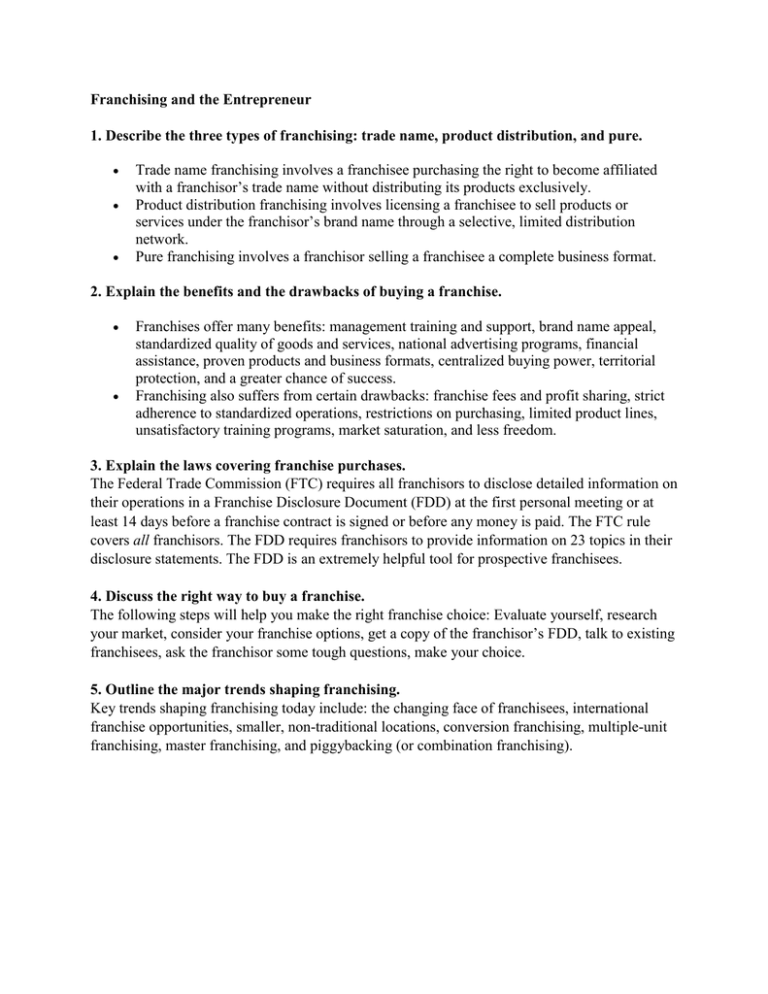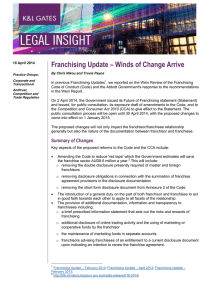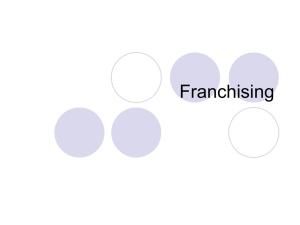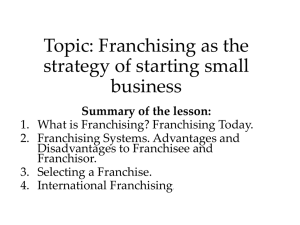File
advertisement

Franchising and the Entrepreneur 1. Describe the three types of franchising: trade name, product distribution, and pure. Trade name franchising involves a franchisee purchasing the right to become affiliated with a franchisor’s trade name without distributing its products exclusively. Product distribution franchising involves licensing a franchisee to sell products or services under the franchisor’s brand name through a selective, limited distribution network. Pure franchising involves a franchisor selling a franchisee a complete business format. 2. Explain the benefits and the drawbacks of buying a franchise. Franchises offer many benefits: management training and support, brand name appeal, standardized quality of goods and services, national advertising programs, financial assistance, proven products and business formats, centralized buying power, territorial protection, and a greater chance of success. Franchising also suffers from certain drawbacks: franchise fees and profit sharing, strict adherence to standardized operations, restrictions on purchasing, limited product lines, unsatisfactory training programs, market saturation, and less freedom. 3. Explain the laws covering franchise purchases. The Federal Trade Commission (FTC) requires all franchisors to disclose detailed information on their operations in a Franchise Disclosure Document (FDD) at the first personal meeting or at least 14 days before a franchise contract is signed or before any money is paid. The FTC rule covers all franchisors. The FDD requires franchisors to provide information on 23 topics in their disclosure statements. The FDD is an extremely helpful tool for prospective franchisees. 4. Discuss the right way to buy a franchise. The following steps will help you make the right franchise choice: Evaluate yourself, research your market, consider your franchise options, get a copy of the franchisor’s FDD, talk to existing franchisees, ask the franchisor some tough questions, make your choice. 5. Outline the major trends shaping franchising. Key trends shaping franchising today include: the changing face of franchisees, international franchise opportunities, smaller, non-traditional locations, conversion franchising, multiple-unit franchising, master franchising, and piggybacking (or combination franchising).











